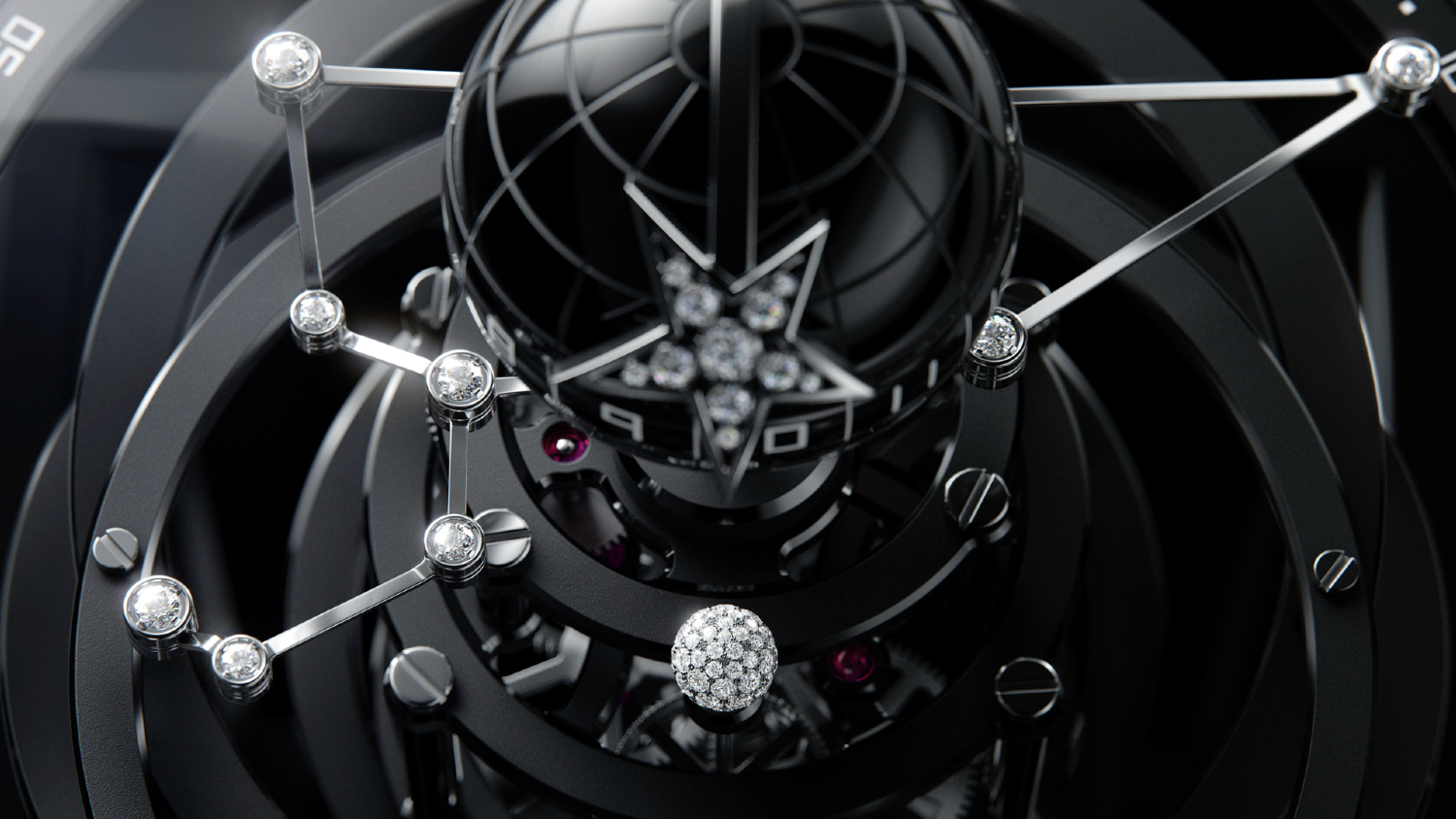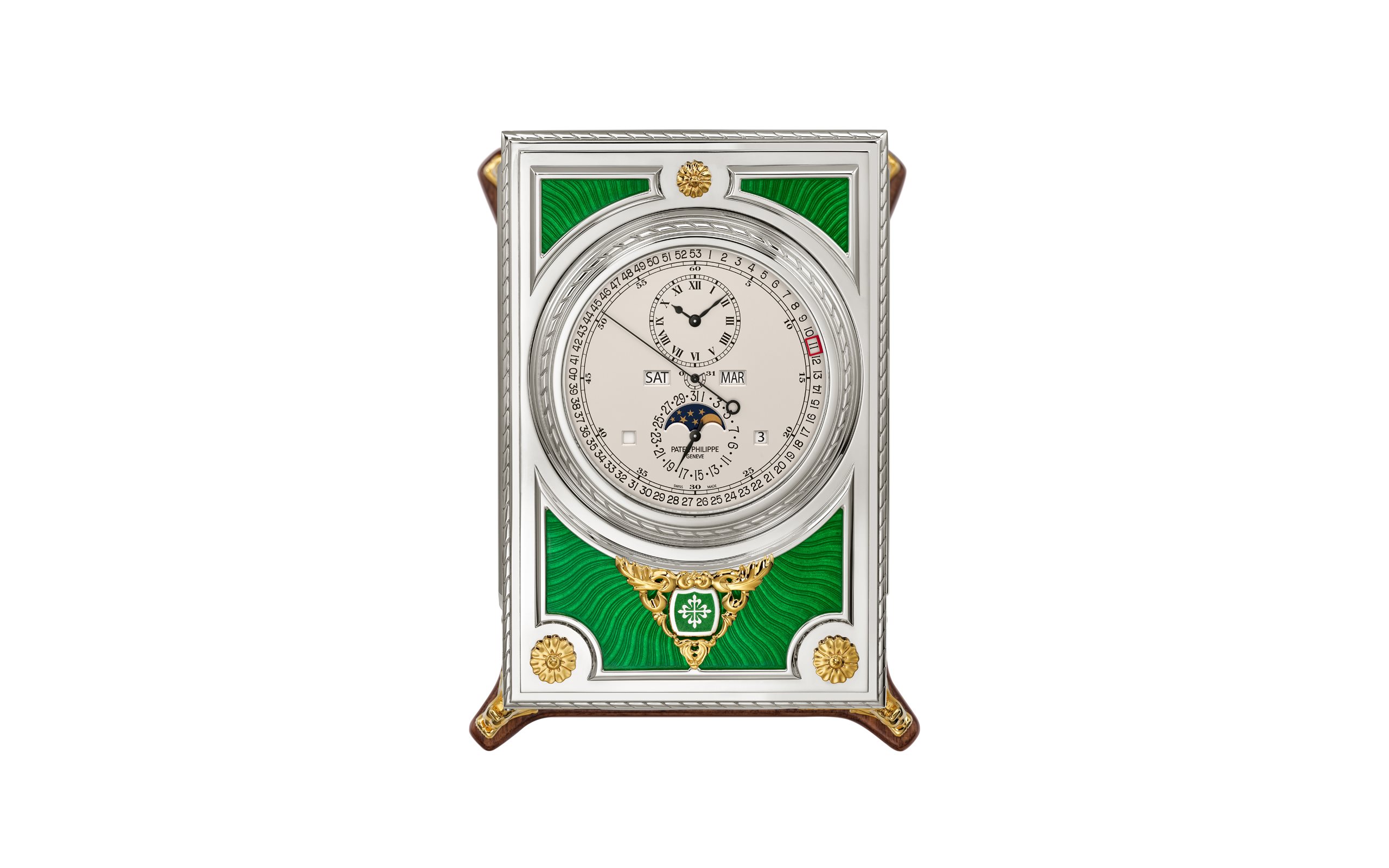 Complicated Desk Clock
Complicated Desk ClockPatek Philippe took inspiration from a desk clock delivered in 1923 to American collector James Ward Packard, as well as from a model of the same type sold in 1927 to another American collector, the legendary Henry Graves Junior, now preserved in the Patek Philippe Museum, for the latest variation of Complicated Desk Clock (Ref. 27000M-001)
Combining tradition and innovation, this sterling silver desk clock displays a perpetual and a weekly calendar, day/night indication displayed in apertures, date, week, moonphases, hours, minutes and jumping seconds.
The clock features a new manual-wound Caliber 86-135 PEND S IRM Q SE offering 31-day power reserve, +/- 1 second per day accuracy, and user-friendliness worthy of a 21st-century timepiece by having a push-button control panel system. At the heart of the movement, there is a precision regulator to guarantee optimum performance.
Drawing inspiration from the first model, the clock is finished with panels in green flinqué Grand Feu enamel, adorned with a swirling guilloché pattern. The upper panel and bezel are adorned with an engraved “rope” motif. The winged lions on the four corners take the form of vermeil (yellow-gilt silver) appliques.
2. Chanel’s Diamond Astroclock
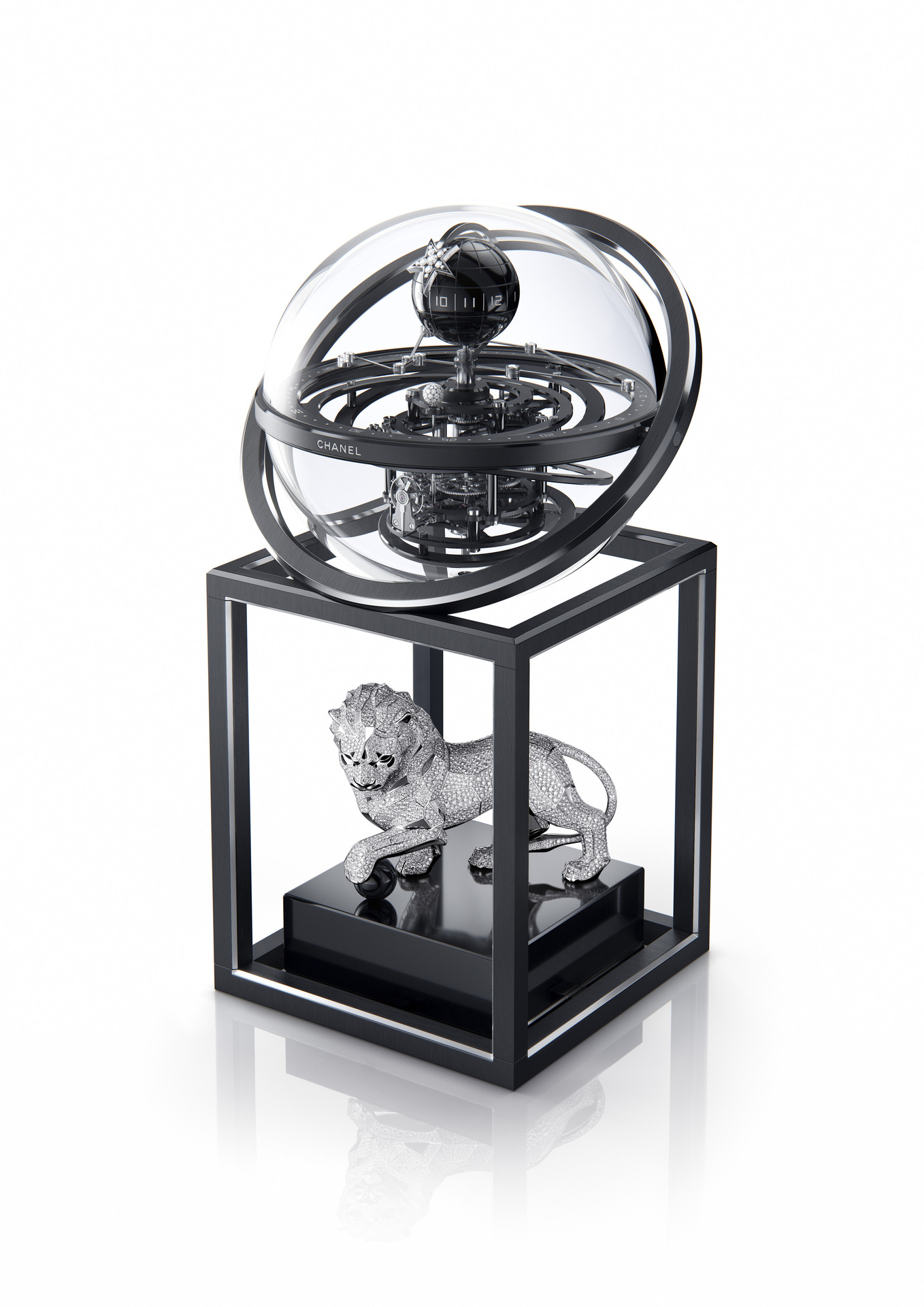 Diamond Astroclock
Diamond AstroclockWith its latest creation, the Chanel Watchmaking Creation Studio presented a spectacular and celestial vision of timekeeping - the Diamond Astroclock features a regal lion (one of Coco Chanel’s favorite motifs given that her star sign was Leo), masterfully carved in white gold and adorned with 5,037 diamonds. Encased in a glass sphere, the hours are elegantly indicated by a comet traveling across a rotating planet, while the constellation of Leo marks the minutes. A rotating white gold sphere, encrusted with brilliant-cut diamonds, serves as a visual reminder that time is in motion. Meticulously created over a period of eight months, each diamond in this clock was individually selected and positioned in the intricate snow-setting technique. At the heart of the Astroclock lies a self-winding mechanical movement, boasting an 8-day power reserve.
3. Panerai’s Jupiterium
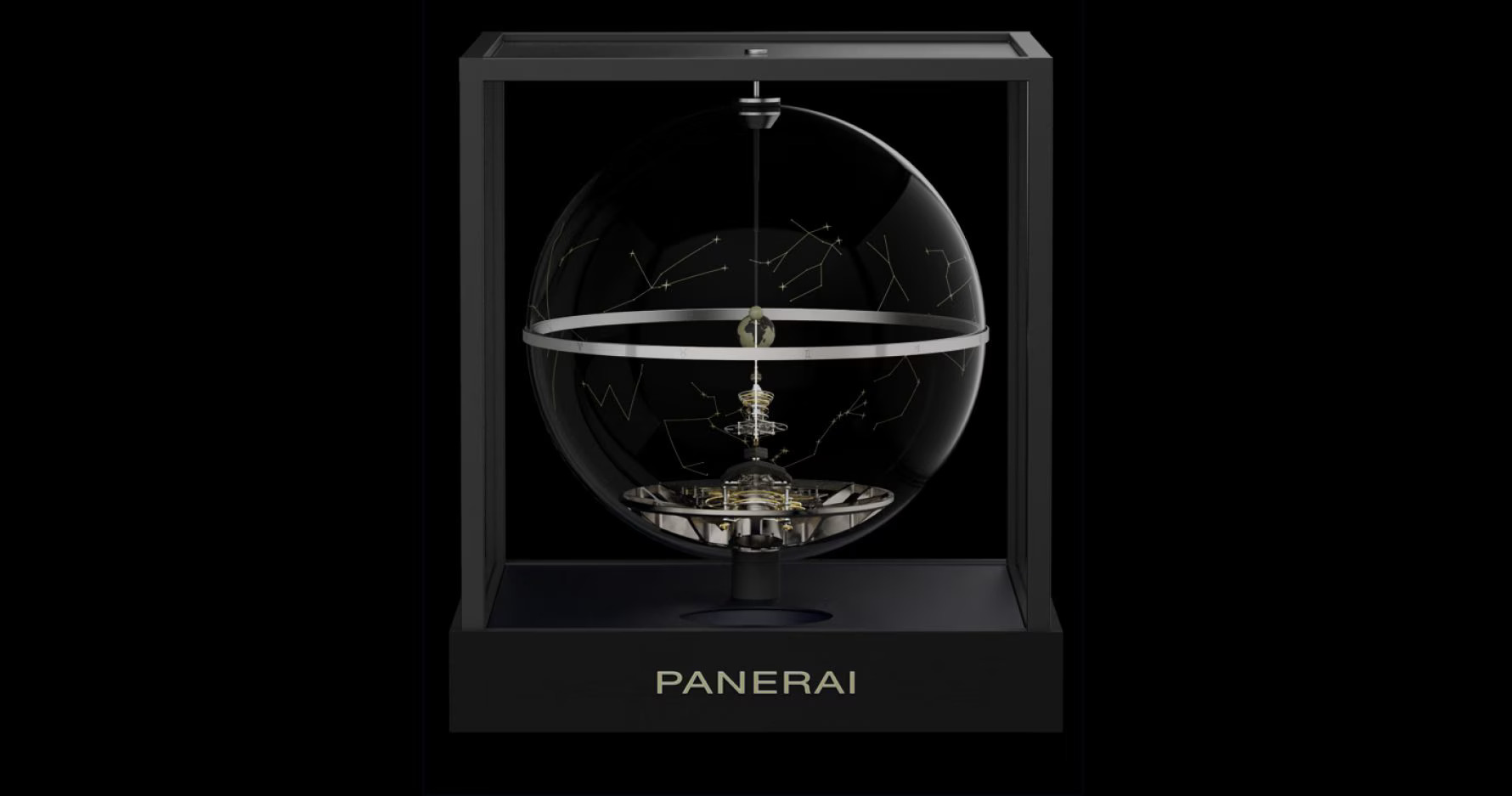 Panerai’s Jupiterium
Panerai’s JupiteriumIn the 17th century, Galileo Galilei used his telescope to observe planet Jupiter and its four largest moons. His discovery led to the establishment that celestial bodies could orbit something other than Earth, challenging the long-held belief in an Earth-centered universe. Panerai dedicated its new clock, the Jupiterium, to this discovery by Galileo.
This is a large-scale planetarium clock based on Galileo’s celestial observations. The clock’s design features a wooden frame supporting a glass sphere, which completes a full rotation every 23 hours, 56 minutes, and 4.09 seconds, mirroring a sidereal day. Inside, Earth and the planets are positioned on titanium arms, reflecting the celestial mechanics Galileo first observed. The zodiac constellations, made in Super-LumiNova, illuminate the sphere’s surface, ensuring they are visible from both terrestrial hemispheres.
The clock features the Earth’s replica at its centre, allowing celestial bodies to revolve around it in real time. Their movements shift based on terrestrial observation points, creating an interactive sky representation. The installation also features the four 'Medicean Stars'—the moons of Jupiter that Galileo first documented.
Notably, the clock’s perpetual calendar movement requires no adjustments until 2099, accurately displaying the day, date, month, and year while automatically accounting for leap years. Powered by eight barrels in series, its 40-day power reserve relies on 32 meters of springs, which are wound using a specially crafted key requiring 110 turns.
4. Trilobe’s Le Temps Retrouvé
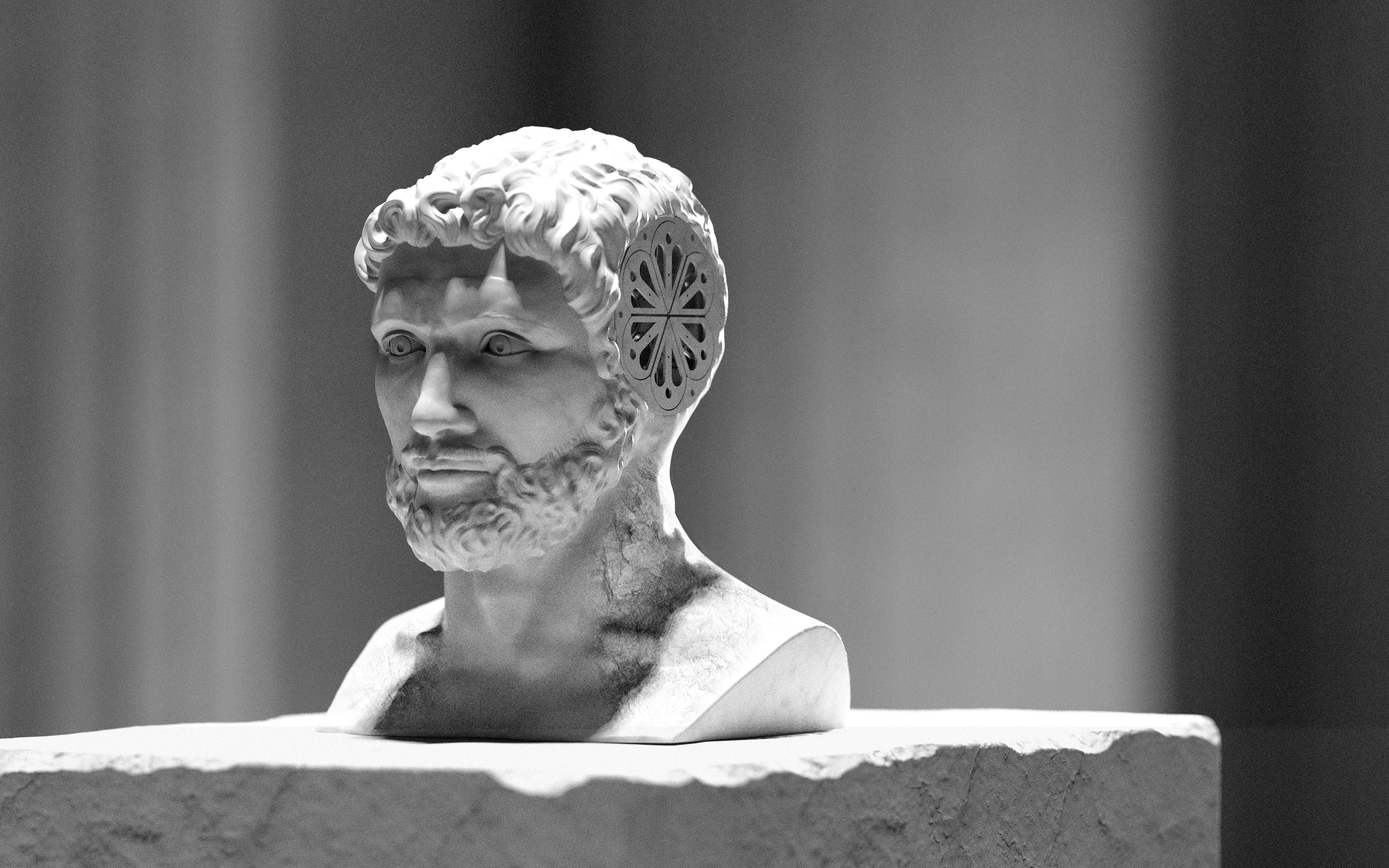 Le Temps Retrouvé by Trilobe
Le Temps Retrouvé by TrilobeLe Temps Retrouvé by Trilobe, unveiled at Watches and Wonders this year, was in the making for four years, and is a result of over 3000 hours of handwork. Devoid of hands, dials, indexes — looking nothing like a traditional clock — Le Temps Retrouvé takes the form of a Roman bust. Crafted from marble ceramic, a material developed by Trilobe, the clock moves away from everything you know about a traditional timepiece and time telling. Rethinking and redesigning all the components of the movement took more than a full day of work to achieve the level of perfection required. Brass, steel and stainless steel is used for custom-made components of the movement.
The sculpture clock is not just a vision to behold but also a sensory experience. The rosettes placed on the temple of the bust mark the hours. Each petal unfolds every per hour, marking the passage of time before closing with a breath at midday. Minutes are read in the subtle movement of the eyes, which transforms the expression of the face as time passes. Seconds are marked by the sculpture's breath. An independent mechanism also diffuses a custom-made fragrance into the air, like a secret breath throughout the day so you can smell and feel your time.
5. Van Cleef & Arpels’ Naissance de l'Amour automaton
 Van Cleef & Arpels’ Naissance de l'Amour automaton
Van Cleef & Arpels’ Naissance de l'Amour automaton
The Naissance de l'Amour features the mythological character of Cupid in a beautiful composition of golds and diamonds. Around 30cm high, the artistic automaton features a basket of feathers in white gold, rose gold, yellow gold and diamonds adorned with a lacquered color gradation. The mechanism of the clock was designed in partnership with François Junod's studio in Sainte-Croix, Switzerland. Cupid sits atop a Greek column in sculpted rose gold and a composition of clouds in white gold, diamonds and pink sapphires in three different shades. A bowl composed of petrified palmwood – a new gemstone in the Maison's creations – holds the basket of feathers. Cupid is not static - he rises, flutters his plique-à-jour enamel wings and returns to its hideaway. His ascent is accompanied by the melody of a carillon. A rotating ring indicates the time with the help of two lacquered feathers accented with diamonds, held in place by a bow entirely paved with diamonds. The clock is powered by a mechanical manual-winding movement.
Images: Courtesy Brand





